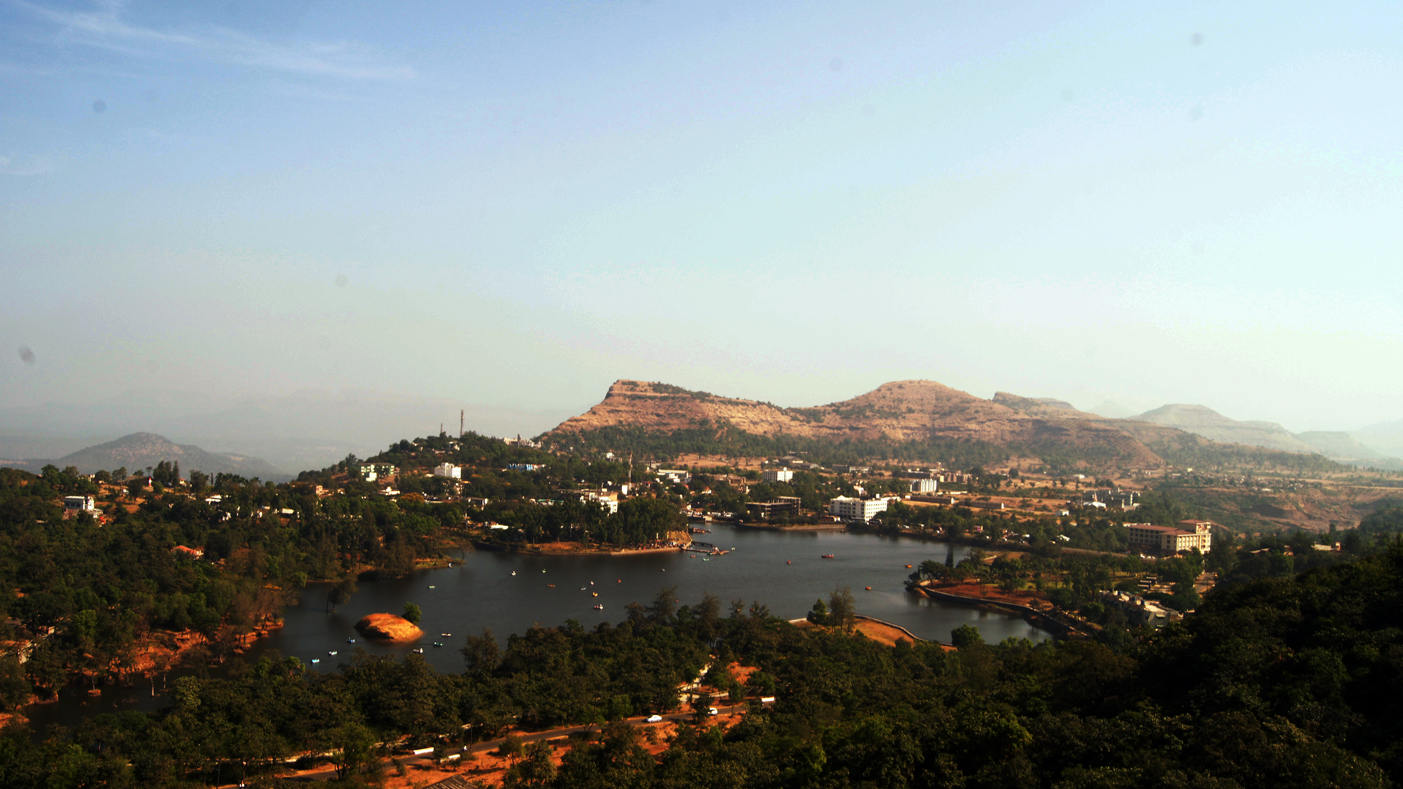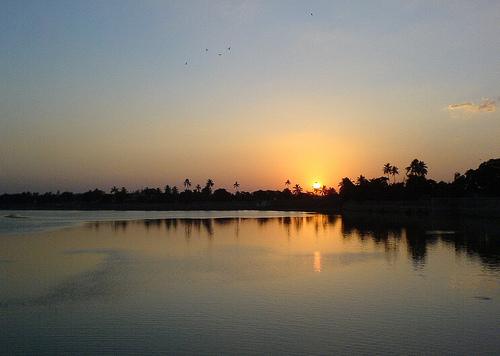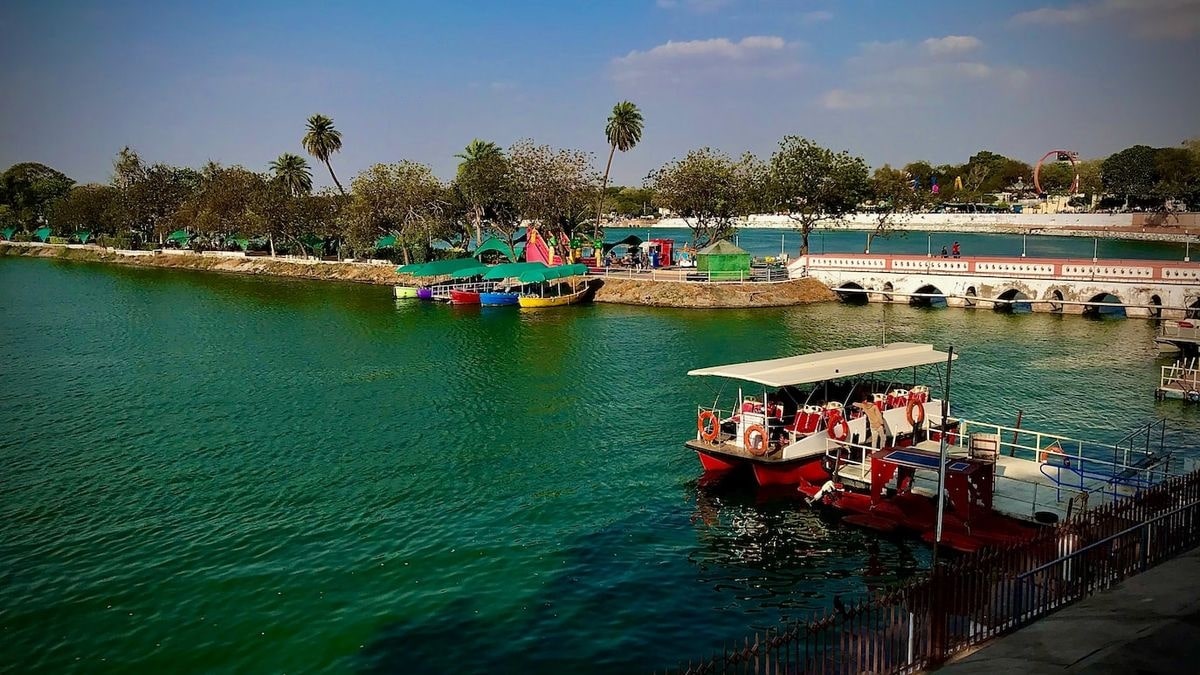Lakes
Saputara Lake
aputara, nestled in the Sahyadris or Western Ghats of the Dang district in South Gujarat, stands at an altitude of 1,000 meters above sea level. Known as the “Abode of Serpents” in Gujarati, it derives its name from the winding Sarpanganga river resembling a serpent. This picturesque hill station offers a cool, bracing climate and stunning vistas of verdant valleys.
Visitors to Saputara can explore a variety of attractions such as Hathgadh Fort, Vansda National Park, and the tranquil Saputara Lake. Scenic viewpoints like Sunrise Point and Sunset Point offer breathtaking panoramas. The region’s rich biodiversity can be experienced at places like Gira Falls, Echo Point, and Purna Sanctuary. Cultural enthusiasts can delve into the heritage of the local Adivasi tribes and witness their vibrant dances during festival of Holi . Saputara promises a memorable hill station experience in the heart of Gujarat.
Facilities:
Orientation Centre
2 Cottages with attached bath & toilet facilities
Tented Accomodations with separate bath & toilet facilities
2 dormitory which can accomodate 10 people at a time each
Separate Kitchen & Dining places
a fully developed eco campsite
Veg & Non-Veg Food available with the help of ETC (Eco Tourism Committee)
Separate area for Campfire
Machaans for landscape & wildlife viewing
The campsite has a beautiful Nature Walking Trail
Tips:
Being a responsible nature lover is our way of showing reverence to Mother Earth, a few tips for you to remember –
Make sure to visit the orientation centre first before you start exploring the campsite as that would give a good picture of what you are about to experience during your stay.
Most of these Eco Campsites use electricity which is generated by using solar energy, hence please use it responsibly.
No smoking whatsoever (cigarette butts cause many forest fires).
No flash or intrusive photography (for example, don’t pluck leaves to clear a better view; reposition the camera instead).
Do not carry any music system or sound making device along with you and remember to keep them switched off if you are driving around.
Picking plants or insects is prohibited in any area; do not remove anything from the parks or sanctuaries.
Do not indulge in any quick or sudden movements to scare off wildlife.
Do not try going too close to the animals.
No pets should accompany you.
No littering. Trash is only to be disposed of in proper receptacles.
No hunting devices or other weapons should be carried, as well as used.


Hamirsar Lake
An excellent place to cool off on a hot afternoon, Hamirsar Lake is where people go to swim, or sit under a tree and enjoy the water, as well as where many women do their laundry. Walking along the lake’s edge is a great way to get from one place to another, with the Aina Mahal and Praga Mahal, the Kutch Museum, the Ramkund Stepwell and Ram Dhun Temple, the Swaminarayan Temple and the Alfred High School all located very close to the eastern side of the lake; a walk from the Aina Mahal to the Swaminarayan Temple (passing all the other sites mentioned) takes about half an hour.
Hamirsar Lake is a manufactured lake named after Hamir Rao, a Jadeja ruler who ruled roughly 450 years ago. It is a popular tourist site in Kutch, Gujarat. The lake was created specifically for Kutch residents to meet their domestic needs.
Location and Accessibility The lake is located in Bhuj, Gujarat, and can be reached by road, train, or air. The Bhuj airport lies 4 km from the city and has ample domestic flights from major destinations in India.
Things to Do Visitors can enjoy swimming, walking along the lake’s edge, or simply sitting under a tree and enjoying the water. The lake is also a great spot for birdwatching, especially during winters.
History and Significance The lake was built by Hamir Rao, a Jadeja ruler, to provide a source of water for the residents of Kutch. The lake is also famous for being the largest man-made lake in Gujarat.
Celebrations and Events The Augun of Hamirsar is a significant celebration held in Bhuj when the lake floods during the rainy season. This festival has been followed since the times of the old rulers, and the Ruler would perform a Puja when the lake flooded, and desserts were distributed as prasad to the people of Kutch.
Best Time to Visit The best time to visit Hamirsar Lake is during the winter months when the weather is cooler and more pleasant.
Maintenance and Facilities The lake is maintained by the municipality and people of Bhuj. While the lake is large, there are no proper maintenance or user-friendly facilities available.
Hamirsar Lake has received mixed reviews from tourists, with some praising its peaceful and photogenic surroundings, while others have criticized the lack of maintenance and facilities.
Sursagar Lake
Built in the 18th century, the Sursagar is also known as Chand Talao. It marks the center of the city of Vadodara, surrounded by the thrum of commerce in the Old City. A tall statue of Lord Shiva, which is lit up on Maha Shivratri, works as a veritable beacon over the lake. The perennial lake has several gates at the bottom that are opened in case of overflooding. The water then pours into the Vishvamitra River.
The Sursagar Lake was earlier known as the Chandan Talav and formerly its location was outside the walls of Baroda. Its original design consisted of embankments and “ghats” that would be used by locals to access the water.
The lake was re-designed and rebuilt in the 18th century to incorporate stone masonry and a stone-walkway that extends around it. During the excavation of the lake area in the 1990’s, an ancient temple was found at the base of the lake.
Today, the lake retains water all year round and has become a favourite evening spot for locals. The lake has underground gates that empty the water into the Vishvamitra river in case of flooding.
A 120-feet tall statue of Lord Shiva stands in the middle of the lake and offers quite a mesmerizing view at sunset. The statue is decorated with lights every Mahashivratri which is a highlight of the lake. The lake is also used for idol immersion during other festivals. Boating is permitted here for a minimal fee but for most visitors, a walk around the lake is just as relaxing.


Ranmal Lake
The attractive, tree-lined promenades around Ranmal Lake have been seriously upgraded and surrounded by a fence with several gateways. There’s a bona fide running track, a brand-new history museum on the east side of the lake, and the diminutive mid-19th-century Lakhota Palace, an island fort in the middle of the lake, housing a small museum featuring weaponry, manuscripts, and pottery from the 9th to the 18th centuries.
Ranmal Lake, also known as Lakhota Lake, is a popular tourist spot in Jamnagar, Gujarat. Here are some key details about the lake:
- History: The lake was built in the mid-19th century by Jan Ranmal II, the king of Navanagar, as a water reservoir.
- Location: The lake is situated in the middle of Jamnagar city, spread over 5 lakh square meters and divided into three parts.
- Features: The lake promotes the beauty of the city and provides an ideal shelter for tourists and migratory birds.
- Construction: The lake was constructed by Jam Ranmalji II between 1820 to 1852.
- Activities: Visitors can enjoy various activities such as boating, strolling, and birdwatching.
- Evening: The lake is a popular spot for evening socializing and relaxation, with food stalls available to satisfy hunger.
- Night: The lake is beautifully lit at night, making it an attractive spot.
- Museum: The diminutive and restored mid-19th-century Lakhota Palace, a fort on an island in Ranmal Lake, houses a semi-open-air museum featuring various exhibits.
- Temple: A temple on the southeastern side of Ranmal Lake has been the scene of continuous chanting of the prayer Shri Ram, Jai Ram, Jai Jai Ram since July 31st.
Kankaria Lake
Built in 1451 as Hauz e Qutub, and recently converted as a recreation space for the city, this large lake is a good respite from the hectic streets. In fact, this is the second largest lake of Ahmedabad, offering a pleasing visual break from the buildings and roads. Attractions include a tethered hot-air balloon (10min ride Rs 100; 10am–10pm), a mini-train and the Kamla Nehru Zoo (entry/camera Rs 20/5; Mar–Oct 9am–6.15pm and Nov–Feb 9am–5.30pm). One Tree Hill Garden on the west side (entered from outside) contains some quite grand colonial Dutch tombs. There are additional trappings of a public entertainment space that can keep kids hooked for hours.
The origin of Kankaria Lake goes back to Chalukyan times. According to the 14th century chronicler Merutunga, the Chalukya ruler Karna built a temple dedicated to the goddess Kochharba. He also established the Karnavati city close to Ahmedabad, where he commissioned the Karnamukteshwara and Jayantidevi temples. The king also built the Karnasagara tank at Karnavati next to Karneshvara Temple. They say Karnasagar tank is today’s Kankaria Lake. Though the construction was started by lake started by Sultan Muizz-ud-Din Muhammad Shah II, it was completed in 1451 in Ahmedabad’s architectural golden period by Sultan Qutb-ud-Din Ahmad Shah II. Researchers say that the name Hauj-e-Qutb (the tank of Qutb) after the Sultan Qutb-ud-Din was the original name of the lake.
Historians believe that the lake gets its name from the large quantities of limestone (kankar in Gujarati) that was dug out of it during excavation. Another story narrates that the Sultan Qutb-ud-Din asked Saint Shah Alam to select the site for a tank and a garden in his kingdom. The saint scattered some pebbles on the site, which was later excavated and the lake was built on the exact spot. A different story leans towards the saint Hazrat-i-Shah Alam’s saga, in which he cut his foot on a sharp pebble while passing through excavation. The lake was then called Kankaria or full of pebbles.
